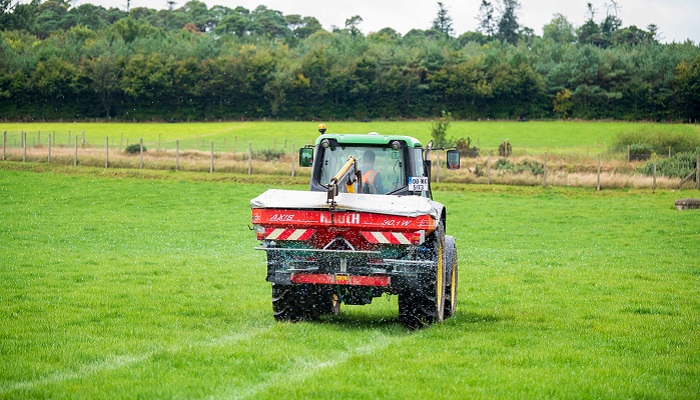03 March 2023
Reducing emissions from fertiliser focus of ‘Flagship’ project

Nitrous oxide (N2O) emissions from agricultural applications of nitrogenous fertiliser can vary significantly depending on how, where and when a fertiliser is used.
Modifying farm systems and making changes to management practices, such as fertiliser type, timing, amount, rate and location of fertiliser application, has been shown to dramatically influence the amount of N2O being emitted.
Participants from 10 member countries of the Global Research Alliance (GRA) attended a meeting to plan the new GRA Flagship Project: ‘Development of context-specific emissions factors from the application of nitrogenous fertilisers’, which was hosted by the Agricultural Climate Research Centre in Teagasc.
In Ireland and New Zealand research funding from the Department of Agriculture, Food and the Marine in Ireland and the Ministry of Primary Industries in New Zealand has been secured to build an international database to support greenhouse gas modelling for grassland soils.
Dominika Krol, Teagasc said: ”This will help to support the GRA Flagship Project to compile existing data, and undertake new field measurements, to develop context specific emissions factors relating to the application of nitrogenous fertilisers for the purpose of inventory improvement including N2O mitigation accounting.”
These exciting internation projects, Karl Richards of Teagasc said, are important ongoing research activities in the Teagasc Agricultural Climate Research Centre to help to reduce greenhouse gas emissions from farms in Ireland and internationally.
Tony van der Weerden from AgResearch New Zealand highlighted that quantifying the emissions from applying nitrogenous fertilisers in different situations in national inventories is a significant challenge for many countries. The flagship project will greatly help in improving national greenhouse gas inventories around the world and identify practices for farmers to reduce emissions.
The flagship project is to encourage global efforts to reduce greenhouse gas emissions from nitrogenous fertiliser, explained Marta Alfaro from Chile, by enabling its usage to be more accurately reflected in national level greenhouse gas accounting, and to optimize nitrogen use efficiency in croplands and grasslands.
